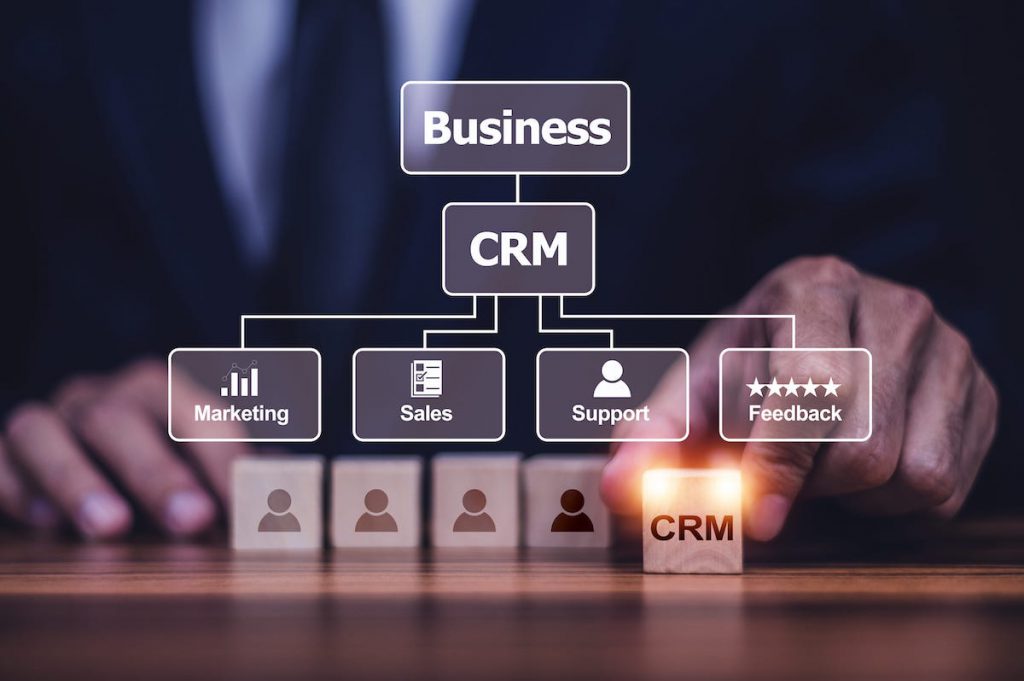
Posted in: CRM Success, Productivity
In 2024, Customer Relationship Management (CRM) will be more important than ever. CRM integration helps firms of all sizes increase their revenue, provide better customer service, and maximize productivity. The right CRM solution also increases the reliability of internal reports, making it easier to identify critical business trends.
Many companies want to take advantage of these benefits, causing CRM adoption rates to increase. Additionally, key decision-makers are looking for a better way to manage sales and marketing data on the go. As a result, CRM companies are rolling out more mobile options. With mobile CRM applications, it’s possible to update customer contact information, add notes about each interaction, and identify new audience segments without setting foot into an office.
Another important trend is the rise of cloud-based CRM solutions. On-premise systems offer many benefits, but with so many sales and marketing professionals working remotely, cloud-based solutions are more convenient. With a cloud-based system, users can access customer data from anywhere with an internet connection.
Due to these changes, decision-makers must adjust their CRM investment approach. Some companies are investing in people to manage CRM initiatives, while others are spending money on new technology or updated processes.
To maximize the benefits of using CRM tools, it’s essential to stay abreast of changes in the industry. Review the CRM statistics below to learn more about how companies worldwide use CRM solutions to improve their bottom lines.
10 Key CRM Facts & Statistics

CRMs maximize productivity by putting sales and marketing data at your fingertips. Instead of fumbling with contact cards or searching your email account for customer data, you can easily access anything from a customer’s phone number to notes about your last conversation. Here are the most critical CRM facts you need to know for 2024:
- Between 2023 and 2028, CRM adoption is expected to increase by 12%. (1)
- Of all the companies using mobile CRM solutions, 65% are meeting their sales goals. (2)
- 91% of all companies with more than 10 employees use some type of CRM system. (2)
- 72% of small-business owners surveyed by Capterra believe that CRM software is very effective or moderately effective for achieving business goals. (3)
- 87% of businesses use a cloud-based CRM solution. (4)
- 65% of companies start using a CRM within 5 years of opening. (4)
- Businesses invest an average of $15 per user per month for their CRM solutions. For a business with 100 users, that works out to $1,500 per month on average. (5)
- 74% of decision-makers report CRM systems offer improved access to customer data. (2)
- Sales team productivity increases by 26.4% when firms add mobile access and social media features to their CRM tools. (2)
- 70% of sales reps believe that using a CRM system helps them close more deals. (6)
As you can see, CRM adoption is growing rapidly, thanks in part to the effects of the COVID-19 pandemic on businesses worldwide. During the pandemic, firms adopted cloud-based CRM tools to help employees maintain high productivity levels even while working from home. Adopting CRM tools and pairing them with other applications makes it easier for businesses to reach their goals.
7 CRM Adoption Statistics

Even small businesses store large volumes of customer data, making robust CRM tools essential. These CRM adoption statistics provide a clearer picture of how many firms are using CRM systems to manage sales and marketing data:
- More than 45% of companies using a CRM solution use the system to manage contacts and automate their sales processes. (6)
- 32% of firms using CRM tools operate in the service industry. (6)
- Although more companies are using CRM than ever, only about 60% of firms using CRM solutions have end-user adoption rates above 90%. (7).
- 82% of employees with access to a mobile CRM solution report that CRMs improve their data quality. (7)
- Providing mobile access to a CRM system increases user productivity by 14.6%. (7)
- Revenue increases by as much as 245% when businesses start using CRM solutions. (4)
- 13% of decision-makers report that investing in a CRM solution is one of their top sales-related priorities. (4)
One of the biggest trends in the CRM field is the use of artificial intelligence to automate time-consuming processes. For example, advanced CRM tools use artificial intelligence (AI) to summarize sales calls, eliminating the need for sales reps to take detailed notes. (8) Artificial intelligence also helps CRM users identify gaps in the marketplace, making it easier to develop new products and services.
In many cases, AI usage has a positive impact on a firm’s financial performance. In addition to increasing revenue with new products and services, firms can optimize their profit margins by using CRM to streamline inefficient processes, improve customer retention rates, and reduce waste.
CRM solutions also improve customer relationships by giving sales professionals access to detailed reports. For example, members of a sales team can use a CRM system to share information about customer preferences and purchase habits, allowing them to make appropriate product and service recommendations.
10 CRM Usage Statistics
Thanks to increased CRM adoption rates, more employees are using CRM tools to manage data and automate their workflows. These CRM statistics provide insight into how businesses are using CRM solutions to maximize operational efficiency and achieve a competitive advantage:
- Approximately 22% of the problems associated with CRM implementation are linked to user adoption. (7)
- Customer retention rates increase by 27% after a business implements some type of CRM solution. (9)
- 74% of businesses report having better relationships with customers after adopting a CRM system. (9)
- On average, businesses earn $8.71 for every dollar they invest in CRM. (4)
- Nearly half of all customer service and marketing teams use CRM to perform their duties. (6)
- According to a Zippia survey, implementing CRM tools helped respondents increase customer satisfaction by 47%. (10)
- 82% of firms use their CRM systems for process automation and sales reporting. (4)
- 50% of small businesses (no more than 10 employees) use CRM to manage their sales and marketing data. (11)
- 80% of consumers are more likely to purchase from firms offering personalized experiences, highlighting the importance of using CRM to track sales and customer service data. (2)
- The CRM market is expected to generate nearly $50 billion in revenue in 2025. (10)
CRM systems enhance operational efficiency in several ways. First, a good CRM solution makes it easier to manage sales, marketing and customer service data. If employees don’t have to enter everything manually or spend hours searching for the information they need, they can spend more time closing deals and building positive customer relationships.
Second, the right CRM system can help a firm reduce its expenses. For example, it’s possible to reduce your marketing expenses by using a CRM tool to reveal current trends rather than paying a research firm. CRM systems also reduce the risk of costly mistakes related to manual data entry.
Finally, advanced CRM systems automate many standard sales, marketing and customer service tasks. If you have software to perform a task for you, there’s no need to hire another employee to do the work.
8 Future Trends in CRM Technology

CRM systems have already come a long way, making them one of the most valuable tools for any modern business. Thanks to advances in technology, however, CRM solutions are changing rapidly. Discover what’s next with these CRM statistics on future trends:
- 71% of marketing professionals believe that generative AI will allow them to spend more time on strategic activities. (12)
- 61% of sales professionals believe that generative AI will help them provide better customer service. (12)
- 51% of marketing professionals report that they currently use or plan to use generative AI. (12)
- In a Salesforce survey, 68% of respondents reported that they use generative AI to personalize their messages to customers. (12)
- 33% of customers feel that they have more options for interacting with product and service providers. (13)
- In 2022, the predictive analytics market was worth more than $12 billion, highlighting the increased demand for analytics tools in sales, marketing and customer service settings. (14)
- 95% of firms use predictive analytics to develop their marketing strategies. (15)
- 46% of firms are using artificial intelligence to manage customer relationships. (16)
Artificial intelligence and predictive analytics are helpful for creating effective omnichannel engagement strategies, as they save time and make it easier to make sense of all the data stored in a CRM system. For example, firms of all sizes can benefit from using predictive analytics to create sales forecasts, estimate churn rates and prioritize leads based on which ones are most likely to convert.
Maximizing ROI With CRM Solutions

Before investing money in a CRM, it’s important to understand the potential return on your investment. Based on these CRM ROI statistics, it’s worth it to use a CRM platform.
- 83% of small businesses reported a positive return on their investment in CRM solutions. (17)
- 51% of small businesses experience an increase in their lead conversion rates after implementing some type of CRM tool. (17)
- The accuracy of a company’s sales forecasts increases by up to 42% after implementing a CRM system. (4)
- Using a CRM platform reduces lead-generation costs by as much as 23%. (4)
- The right CRM platform may increase a firm’s conversion rate by up to 300%, leading to increased revenue and higher profit margins. (4)
- Using CRM software increases reporting accuracy by as much as 42%. (4)
- CRM systems increase productivity by as much as 34%. (2)
- CRM systems help firms cut costs by as much as 20%. (10)
With the right strategy, it’s possible to maximize your ROI, resulting in lower operating costs and higher profit margins. For example, a robust CRM system allows firms to automate their workflows. Most systems are trigger-based, which means one action triggers another in a predictable sequence of events. Using triggers eliminates the need for manual tracking, saving time and reducing the risk of errors.
Email marketing is an excellent example of how firms use CRM to automate certain activities. When a prospect signs up for a company newsletter, your CRM system sends a welcome message and invites the new subscriber to explore your website. The system may also send several follow-up emails in a predetermined sequence. This completely eliminates the need for an employee to send a welcome message or follow up with the subscriber.
Take Advantage of What CRMs Can Offer

CRM integration makes any CRM system more effective by introducing additional features. For example, it’s possible to integrate CRM with your preferred email software, which allows users to access previous email messages, compose new messages from the CRM interface and perform other tasks without having to use two separate programs.
LinkPoint Connect makes it easy to connect your email software to your CRM solution. The software allows you to record emails, sync calendars, book meetings, summarize meeting notes and perform other critical tasks right from your CRM platform. Sign up for a free trial to discover how LinkPoint Connect can help you streamline your workflows.
References
1. Scheiner, M. (2024). 17 CRM Statistics: Growth, Revenue & Adoption Trends in 2024. [online] CRM.org. Available at: https://crm.org/crmland/crm-statistics
2. Cawley, C. (2023). 51 CRM Statistics. [online] Tech.co. Available at: https://tech.co/crm-software/crm-statistics
3. Froniewski, G. (2023). Why CRM Software Integrations Help Your Business. [online] Capterra. Available at: https://www.capterra.com/resources/crm-integrations-help-your-business/
4. Gibbons, M. (2024). 20 Impressive CRM Statistics You Need to Know in 2024. [online] WebFX. Available at: https://www.webfx.com/blog/marketing/crm-statistics/
5. Schram, B., & Credle, K. (2023). CRM Pricing Guide 2024. [online] MarketWatch. Available at: https://www.marketwatch.com/guides/business/crm-pricing/
6. Pipeline CRM. (n.d.). 15 CRM Statistics You Need to Know in 2024. [online] Available at: https://pipelinecrm.com/blog/crm-statistics/
7. Nomalys. (2020). 28 Surprising CRM Statistics About Adoption, Features, Benefits and Mobility. [online] Available at: https://www.nomalys.com/en/28-surprising-crm-statistics-about-adoption-features-benefits-and-mobility
8. Weinberg, N. (2024). 9 CRM Trends for 2024. [online] CIO. Available at: https://www.cio.com/article/1255983/customer-relationship-management-crm-trends.html
9. Hodges, J. (2023). CRM Statistics That Will Blow Your Mind. [online] Five CRM. Available at: https://www.fivecrm.com/blog/crm-statistics-that-will-blow-your-mind
10. McCain, A. (2023). 23 Key CRM Statistics [2023]: Growth, Revenue, Adoption Rates. [online] Zippia. Available at: https://www.zippia.com/advice/crm-statistics/
11. Super Office. (2022). 18 CRM Statistics You Need to Know for 2023 (and Beyond). [online] Available at: https://www.superoffice.com/blog/crm-software-statistics
12. Salesforce. (2023). Top Generative AI Statistics for 2024. [online] Available at: https://www.salesforce.com/news/stories/generative-ai-statistics/
13. Smart Communications. (2023). The State of Customer Conversations. [online] Available at: https://www.smartcommunications.com/resources/benchmark-report
14. Olavsrud, T., & Edwards, J. (2023). What Is Predictive Analytics? Transforming Data Into Future Insights. [online] CIO. Available at: https://www.cio.com/article/228901/what-is-predictive-analytics-transforming-data-into-future-insights.html
15. Leavey School of Business Santa Clara University. (2024). Applications of Predictive Analytics in Business. [online] Available at: https://onlinedegrees.scu.edu/media/blog/applications-of-predictive-analytics-in-business
16. CompTIA Community. (2024). Top Artificial Intelligence Statistics and Facts for 2024. [online] Available at: https://connect.comptia.org/blog/artificial-intelligence-statistics-facts
17. Caballero, B. (2024). 28 CRM Statistics Every Small Business Should Know for 2024. [online] Fit Small Business. Available at: https://fitsmallbusiness.com/crm-statistics/

